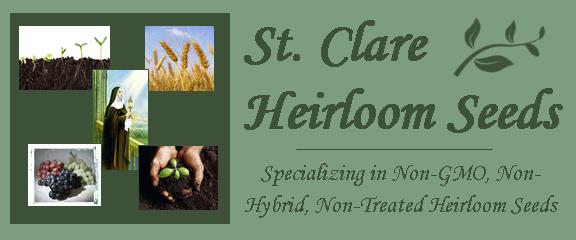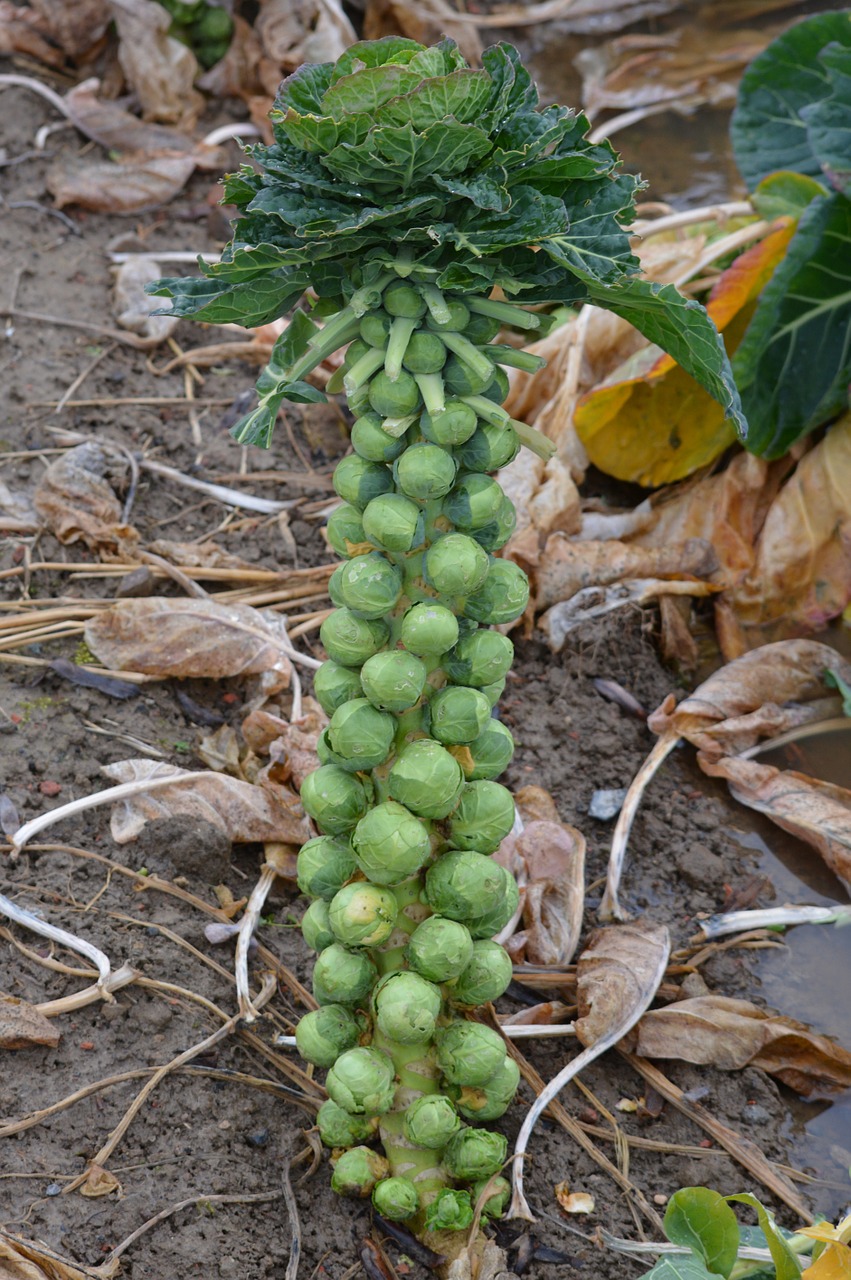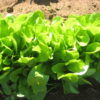Description
Long Island Improved Brussels Sprouts (A.K.A. Half Dwarf Improved, Long Island Improved Catskill Strain)
50 Seeds per pack
Days to Maturity: 85–115 Days
Sun Requirements: Full Sun
Botanical Name: (Brassica oleracea)
Introduced in the 1890s, Long Island Improved quickly became the standard Brussels sprout for both home gardens and market growers. Often confused with the later “Catskill” strain of 1941, this heirloom offers distinct traits of its own. Its semi-dwarf plants grow to a tidy 20–24 inches tall, topped with a rosette of broad leaves that give the appearance of a miniature palm. Along the stout central stem, it produces abundant, tightly packed, dark green sprouts—each one firm, dense, and about 1 to 1½ inches across.
Known for its rich, nutty flavor, that taste improves after a frost, deepening to a pleasant sweetness, making it ideal for late autumn and winter meals. Thriving down to 10°F, these cold hardy plants can stand in the garden well into winter. Preferring full sun and cooler weather, it performs well in a range of temperate climates.
Sprouts are excellent roasted, braised, or sautéed, and the larger top leaves can be cooked down like mild collards. They also freeze well for winter use when blanched. Long Island Improved is rich in vitamins A, C, and K, with folate, fiber, and minerals like potassium and iron, making it nutritious as well as a delicious addition to the garden!
Planting Instructions for Long Island Improved Brussels Sprouts Seeds
When to Plant:
Start Long Island Improved seeds indoors 4–6 weeks before your last expected frost date for a fall harvest, typically between February and May depending on your region. In northern zones, indoor starting is essential. In warmer areas, you may direct-sow in midsummer for a winter crop.
How to Start Indoors:
Sow Long Island Improved seeds ¼–½″ deep in modular seed trays filled with a sterile, peat-free seed-starting mix. Place two seeds per module. Keep trays in a bright area or under grow lights. Maintain consistent moisture without waterlogging. Thin to one seedling per cell after germination. Begin feeding with diluted organic fertilizer once the first true leaves appear, gradually increasing to twice a week. Harden off seedlings over 7–10 days before transplanting by gradually introducing them to sunlight and outdoor conditions.
Transplanting to the Garden:
Transplant Long Island Improved seedlings after last frost and when they are 4–6″ tall and well-rooted, spacing plants 18–24″ apart in rows 24–36″ apart. Choose a sunny, sheltered spot with fertile, firm, well-drained soil. If your soil is acidic, apply lime in advance to raise pH to at least 6.5. Enrich the planting area with aged compost or manure and a low-nitrogen, high-phosphorus fertilizer. Set plants slightly deeper than they grew in their containers and water in well.
Direct Sowing Outdoors:
If direct sowing, plant ¼–½″ deep, dropping 2–3 seeds every 18″, thinning to the strongest seedling once sprouted. Keep soil evenly moist. Use row cover to protect young plants from pests and wind, especially in early spring or midsummer heat.
Growing Tips:
Maintain even soil moisture throughout the season—about 1″ per week—especially in dry periods. Apply mulch to conserve moisture and help suppress weeds. Side-dress with compost or balanced fertilizer when plants reach 6″ tall and again midseason. Stake plants to prevent lodging. In early fall (about a month before harvest), cut off the top inch or two of the main stem to stop upward growth. This helps all the sprouts on the stalk ripen at the same time.
Pests and Protection:
Common pests include cabbage worms, aphids, slugs, and root maggots. Use floating row covers to keep insects off young plants. You can handpick pests, spray aphids off with water, or use organic insecticidal soap or neem oil if needed. Slugs can be trapped or deterred with diatomaceous earth, beer traps, and copper strips. Always use food-grade diatomaceous earth, and keep beer traps out of reach of animals to prevent accidental drinking. To reduce root maggot risk, use collars around stems and avoid planting in the same spot for four years. For diseases like clubroot, rotate crops, lime acidic soil to raise pH, and remove infected plants immediately.
Harvesting:
Begin harvesting after the first fall frost, which improves flavor. Sprouts mature from the bottom up and should be 1–2″ in diameter and tightly closed. Harvest by twisting or cutting off individual sprouts, or cut the entire stalk when most sprouts are ready. As you harvest sprouts, pull off any yellowing leaves from the lower part of the plant to keep it tidy and healthy. Long Island Improved sprouts can be stored in the refrigerator or root cellar, or blanched and frozen for long term storage.
Container Growing:
Use large containers (minimum 12″ wide and deep) filled with compost-rich potting soil. Water regularly, and ensure strong support for the tall, top-heavy plants.
Saving Seeds:
To save seeds from Long Island Improved Brussels sprouts, allow a few healthy plants to overwinter and bolt (flower) in their second year. These plants will produce yellow flowers followed by seed pods. Let the pods dry on the plant, then harvest and crush them to collect the seeds. Clean and store seeds in a cool, dry, and dark place. Be sure to isolate from other brassicas to prevent cross-pollination. We offer seed saving envelopes for storing your homegrown seeds!
FAQ:
What is the historical or notable background of Long Island Improved Brussels Sprouts?
Introduced in the 1890s, Long Island Improved quickly established itself as the standard Brussels sprout variety for both home gardeners and commercial growers. Though often confused with the later Catskill strain from 1941, this heirloom has distinctive characteristics and has remained a reliable favorite for over a century.
How would you describe the flavor of Long Island Improved Brussels Sprouts?
Long Island Improved sprouts have a rich, nutty taste that sweetens notably after a frost, making them a delicious choice for fall and winter meals.
What does Long Island Improved Brussels Sprouts look like, and how does it grow?
This semi-dwarf plant reaches a compact 20–24 inches in height and resembles a miniature palm with its top rosette of broad leaves. Along its stout central stalk, it produces tightly packed, dark green sprouts that are firm and dense, typically 1 to 1½ inches across.
How and when do I harvest Long Island Improved Brussels Sprouts?
Begin harvesting after the first fall frost to enjoy enhanced sweetness. Pick sprouts from the bottom up when they are 1–2 inches in diameter and still tightly closed. They can be harvested individually or by cutting the entire stalk.
When is the best time to plant Long Island Improved Brussels Sprouts?
Start seeds indoors 4–6 weeks before the last frost for a fall crop. In cooler climates, this means starting between February and May. In warmer regions, direct sow in midsummer for winter harvesting.
What are common culinary uses for Long Island Improved Brussels Sprouts?
These sprouts are excellent roasted, braised, or sautéed. Their large, mild-flavored top leaves can also be cooked like collards, and both the sprouts and leaves can be blanched and frozen for future use.
What’s the best way to store Long Island Improved Brussels Sprouts after harvest?
They store well in the refrigerator or root cellar. For long-term storage, blanch and freeze the sprouts and leaves soon after harvesting to retain their flavor and nutrients.
What nutrients do Long Island Improved Brussels Sprouts provide?
This variety is nutrient rich, offering vitamins A, C, and K, along with folate, dietary fiber, and essential minerals like potassium and iron.
Can Long Island Improved Brussels Sprouts withstand cold temperatures?
Yes, Long Island Improved is exceptionally cold hardy, tolerating temperatures down to 10°F. This makes it ideal for late fall and winter harvests, as it can remain standing and productive well into the colder months.


















Carol (verified owner) –
Grows very well, my husband eats them and I blanch and freeze the rest for winter.
Robert Loring (verified owner) –
Very satisfied with all the seeds.
Elizabeth K. (verified owner) –
Sweet and crunchy!
Mark M. (verified owner) –
Fast delivery, resealable plastic bags for the seeds, quick germination and almost 100% success rate. I’ll be spreading the word for sure!
Patricia Niccoli (verified owner) –
Ditto
Robert D. (verified owner) –
5 star!
Patricia Stone (verified owner) –
5 star!
Regina Harris (verified owner) –
5 star!
JAY TUFFORD (verified owner) –
Great product from a wonderful company
Lauren Campbell (verified owner) –
4 star!
Michael Fox (verified owner) –
Elizabeth Richards (verified owner) –